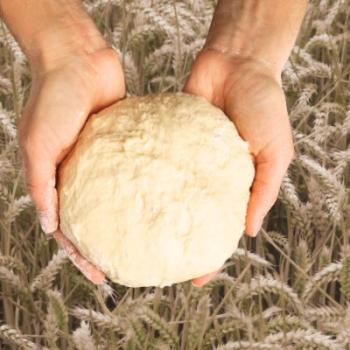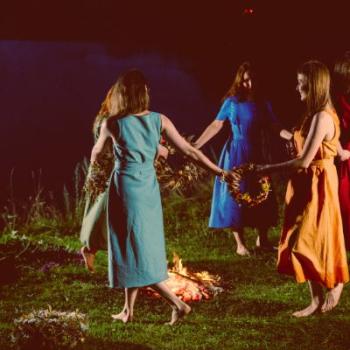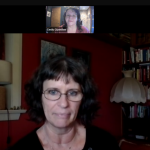
I wrote a small essay about Ergi in my 2011 book Seidr: The Gate Is Open. Ergi was the term used within the Nordic sagas to describe men who worked seidr (loosely described as witchcraft/ magick). It has been translated as “unmanly” or “as a woman”
The book is coming up to it’s tenth year and as such there are concepts and theories which now seem outdated.
Research, but also social theory, has changed opinions in many areas. There are conclusions within the narrative I may not have come to if the book had been published now. Several areas could do with a small rewrite.
Ergi is one of those subjects.
I won’t republish the whole essay in this post. Instead this serves as a companion piece, updated with a 2020 viewpoint on gender and identity.
I wrote about the concept of Seidr being unmanly, ‘ergi’ as translated and discussed by Jenny Jochens and Jenny Blain.
At the time I was writing, social media and the community still used ergi as an explanation of why more women than men practised Seidr. Sometimes the unmanly explanation was taken a step further and the term homosexual was used. Jenny Blain pointed out, in her 2001 book, that more gay men than straight were practitioners.
Originally, I interpreted much of ergi within the sagas as being more about cowardice than homosexuality. The theory I put forward was that to be manly was to fight face to face with your enemy, to meet with them in battle. If you used witchcraft you did so from a distance and therefore didn’t put yourself in physical danger. In a warrior society, this is why ergi was considered shameful.
Re-reading some of these sagas I want to consider how much of the descriptions of ergi were associated with shame, and what level of this interpretation is our twenty first century reading of the term unmanly.
Within Egil’s saga, the male Seidr worker was described as having brought shame to his family which is why he was shut into the building along with the other Seidr workers. In 2011 the theory was his Seidr was shameful because it was unmanly.
I believe we didn’t consider the possibility it was the way he used Seidr which was shameful, rather than the ergi aspect of Seidr in general.
Much like witchcraft today, maybe some uses of Seidr were not appropriate. Witchcraft as a practise isn’t considered unethical today, but love spells for example are. Was it the working they did rather than the use of Seidr which was embarrassing? Could it be ergi had nothing to do with the description of the men as bringing shame?
Jochens also shows that women who took the initiative sexually were ergi. I spoke in the original essay a great deal about active and passive energy and becoming a ‘vessel’. However, I believe a lot of this theory within ritual magick comes from Crowley. His views on women becoming vessels you can fill energetically are no longer something I wish to dwell on or subscribe to.
Therefore, I’d like to consider the idea of ergi as now simply meaning “acting against gender expectations”
Since parenting both a born male and born female child, I understand a lot more about structural gender expectations within our society. Anything my daughter did which was outside of her gender norms was considered exciting and to be championed. When my son acted outside of his gender norms both male and female identifying people looked on his behaviour as questionable or shameful.
This highlights the way we still view patriarchy as the norm and maleness as being superior to femininity. If we consider being womanly is being shameful for men, we’re considering being male as being better than being female. Women become the second gender classification.
Was this the same within Norse culture?
Our viewing of it being shameful to be “as a woman” is so drenched in our own unconscious bias, it’s hard to unpick.
The symbol of the norse wife was keys. Authority.
She ran the homestead, managed the budgets, and in a similar way to women today carried the mental load of the decision making and task division.
Children didn’t automatically inherit male names. They became “son of the father” and “daughter of the mother” not just “child of the man who claimed them”. Inheritance wasn’t patriarchal in the same way it is within our society. Women solved problems. They were wise and clever; they could be tricksy and inventive. Cunning being a word linked to c*nt not c*ck.
Odin was an unusual man in that he was considered wise. He was also described as ergi.
Loki was described as ergi because he turned himself into a female mare and gave birth. Men didn’t give birth.
Not conforming to gender stereotypes, although highlighted within the sagas, didn’t have the same “you go girl” and “oh dear boy” overlay as our own society bias gives us.
Our unconscious misogyny colours the view we have of the way Norse society would have considered those who stepped outside of gender norms.
Archaeology and historical interpretation have meant skeletons with weaponry and armour were given the title “male” without much thought. Yet we have sagas which include clear examples of women warriors.
These were dismissed for many years.
As were male skeletons with female grave goods.
Historians are still theorising whether these were transgender individuals or if they were men and women who were comfortable in their bodies but not within their gender roles. I suspect, much like today, there may have been a bit of both. Much like transmen and transwomen today their gender preferences wouldn’t have necessarily been a marker of their sexual gender attraction. There’s astonishingly little research so far into Norse same sex attraction and relationships.
Whilst this new mindset needed including in the ergi debate, my original conclusion still stands.
Even my original comment that “gender itself is also individual and is therefore not as simple as male and female” is up to date.
All genders can work Seidr and it shouldn’t be identified more closely with femininity. By calling it a norse feminine tradition we’re doing it a disservice. Not because it’s lesser to be female, but because it was more than that.
Unmanly doesn’t have to mean ‘as a woman’ and needs to stop being read by contemporary scholars and practitioners as automatically an insult.













